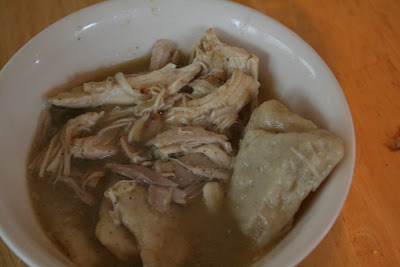It's only been fairly recently that I realized Americans really don't do butter tarts. You'd think I'd've noticed before now: since I moved to the States I've only seen and eaten butter tarts when I've been home visiting. Apparently they're a Canadian treat, who knew?
If you're not familiar with butter tarts, they're a delectable caramel confection, much like a southern pecan pie, but not as gelatinous. The filling is mainly butter and sugar. When I was growing up, they always had raisins in them, but they're not raisin tarts: the raisins are more of an adjunct than a main ingredient. The end result is a sort of caramel tart with a buttery, slightly gooey center.
 |
| From Baking day |
Butter tarts aren't for the faint of heart. These little guys are pancreatic death bombs. If you've got blood sugar problems, or if diabetes runs in your family, or if you know someone with blood sugar problems, or if you've ever heard the word "pancreas"; you should probably avoid these guys like the plague. They'll kill you.
But today I was going to be deserted by wife and children for the day, so I decided to do some Christmas baking. And what says Christmas to an ex-pat Canadian, like fresh butter tarts? So I took out Mum's butter tart recipe, got my French press going, put on Christmas with the Academy, and settled in for a baking day.
The first order of business was baking some bread. I've experimented with bread off-and-on for the last four years: I've had some success with yeast breads, but sourdough hasn't been quite so easy. I began a new sourdough starter with the dregs of some beer I made last month, and it's been doing all right. We've made a couple things with it, and last night I decided to make some bread. It was looking pretty good this morning, having fermented all night, so into the oven it went.
 |
| From Baking day |
Bread done, it was time to make tarts. I've never made tarts before, of any kind at all. I was planning on using a muffin tin to bake them, but Ames showed me this pan:
 |
| From Baking day |
I said, "Oh! I didn't know we had a tart pan."
She responded, "This isn't a tart pan."
Not wanting to betray my ignorance, I merely nodded knowingly. I have no idea what kind of pan that is, and am too embarrassed to ask.
At any rate, I took our not-a-tart-pan and started assembling tarts.
 |
| From Baking day |
The first batch didn't turn out the best. I made two rookie mistakes: first, I over-filled the tarts so that the centers overflowed the shells and left a real mess on my pans.
 |
| From Baking day |
 |
| From Baking day |
So I made another batch. This time I greased the pan, carefully measured out a smaller portion of center per tart, and removed them while they were still dangerously hot. The result: I got a decent pan of tarts.
 |
| From Baking day |
 |
| From Baking day |
It was frankly pretty nice to taste something so like home. I'd forgotten how great these little guys are. All told, I made something like 30 tarts, and most of them are still intact. I think I'll need to make another couple dozen before Christmas.
Butter tarts out of the way, I got working on dinner: Chicken and Pastry.
 |
| From Baking day |
Yeah, today was a good day.
There's still a lot of Christmas baking to do. I've not made Stollen yet this year, and I'm planning on at least one batch of ridiculously over-caramelled cinnamon buns. And it seems like I haven't made a pie in years.
But today was a nice way to get into Christmas.










































